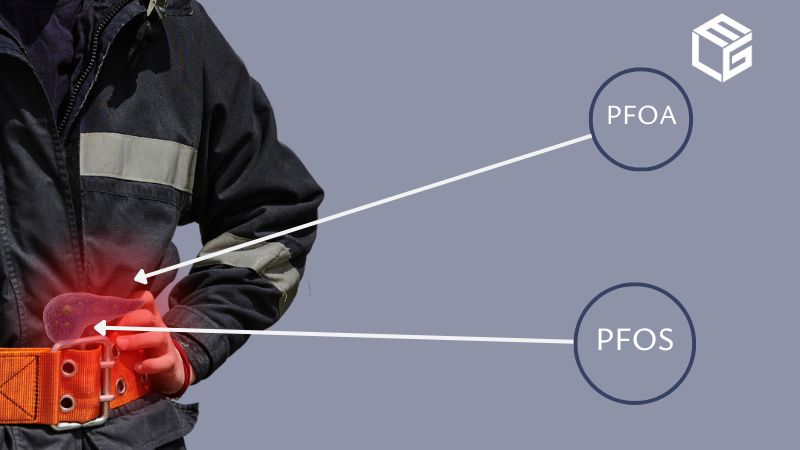PFAS exposure was found to induce pancreatic acinar cell tumors in rodents
Although the proportion of pancreatic cancer that can be attributed to exposure to environmental chemicals is configured by a small percentage, these factors can be prevented and it is important to identify them.
Consequently, attention must be given to the involuntary human exposure to a group of more than 4,000 chemicals, known as PFAS (per- and polyfluoroalkyl substances.
These highly toxic fluorinated compounds are currently the most abundant environmental pollutants.
PFOA & PFOS play a major role in the etiology of carcinoma of the pancreas
In June 2019, at the National PFAS Conference at Northeastern University, Dr. Linda Silber Birnbaum, an American toxicologist, microbiologist, and Director of the National Institute for Environmental Health Science (NIEHS) provided summary results of one of the latest studies conducted showing a link between PFAS exposure to pancreatic cancer in rodents.
According to a summary of the investigation, male rats exposed to PFOA developed both cancerous and noncancerous tumors of the pancreas.
PFAS chemicals have been dubbed 'possibly carcinogenic' to humans by the U.S. Environmental Protection Agency and the International Agency for Cancer Research. When the body comes into contact with a carcinogen, free radicals are formed. When an overload of free radicals cannot progressively be destroyed, their accumulation in the body generates a phenomenon called oxidative stress.
This process plays a crucial role in the development of cancer. Experimental toxicology has demonstrated that Beta-cell destruction or dysfunction can be caused by chemicals. These observations suggest that normal or genetically predisposed individuals might lose Beta-cell function as a result of environmental influences such as exposure to toxic chemicals introduced into the environment or used as drugs or food additives.
The dominant source of human exposure to PFAS is daily diet. For example, food can be contaminated with PFAS from preparation in nonstick cookware coated with polytetrafluoroethylene. Paper products used for food packaging with treated coatings for grease resistance also have a high potential for migration of PFAS to food.
Pancreatic cancer among the most aggressive tumor types
Pancreatic cancer is one of the most lethal human cancers and an important cause of cancer-associated mortalities worldwide. Despite the advancement in medical knowledge that has improved the survival rate of many cancers, the 5-year survival rate for pancreatic cancer remains at 9 percent. There is an urgent need to improve patient outcomes and increase the survival rate. But, for this, we need to identify the causes or the risk factors of pancreatic cancer in order to establish effective preventive strategies.
Several epidemiologic studies suggest that chemical carcinogens may induce pancreatic cancer in humans and several chemicals including PFOA and PFOS have been demonstrated to induce carcinoma of the exocrine pancreas in experimental animals following systemic administration.
When it is caused by AFFF exposure, pancreatic cancer has a latency of 10 years. Early detection of pancreatic injury, progressing to inflammation and fibrosis, should be critical for the success of both clinical and surgical interventional therapies. Pancreatic cancer symptoms and signs not to ignore include:
- Jaundice
- Dark urine
- Sudden-onset diabetes
- Abdominal pain
- Back pain
- Bloating or the feeling of fullness
- Nausea, vomiting or indigestion
- Lack of appetite
It is important to discuss any of these symptoms with your doctor as many conditions can cause these symptoms, so your doctor may check for these conditions as well as for pancreatic cancer. If you are concerned and choose to have your blood tested for PFAS chemicals, test results will tell you how much of each PFAS is in your blood. A PFAS blood test would give you certainty and help you obtain sound medical advice.
How are firefighters exposed to PFAS?
Firefighters work both indoors and outdoors to extinguish fires. As they fight fires, they absorb significant concentrations of hazardous chemicals through their skin. PFOS was used in the manufacturing of firefighting foam through the early-2000s.
Although the long-chain version of the chemicals has been eliminated in the production process, some foam that contains it may still be in service.
Firefighters may be exposed to PFAS through firefighting foam and managing PFAS foam wastes.
PFAS also has been used in water-repellant fabrics within the layers of bunker gear to make gear very durable and to protect firefighters from steam. The chemical could have entered the firemen's body through absorption, inhalation or ingestion from their bunker tools.
PFAS found on hundreds of military installations
If PFAS chemicals are present in soil, and sediment, they can be absorbed across the skin, through inhalation, or direct ingestion. Direct ingestion of PFAS is the most common form of exposure via contaminated soil. The PFAS-contaminated soil on military bases is caused by firefighting foam, which the military uses for decades, for training and testing purposes, and to control fires involving flammable liquids. Consequently, many military installations have an elevated risk of PFAS contamination.
Because of the high concentrations of PFAS used in the AFFF, those who worked on particular military installations may be at risk of developing a wide range of health problems.
Claim eligibility in pancreatic cancer and possible misdiagnosis
Because early signs of pancreatic cancer are somewhat vague and don't necessarily prompt a work-up by a doctor, pancreatic cancer is usually discovered once it has advanced.
When they appear, many of the symptoms of pancreatic cancer, such as abdominal pain, nausea, and vomiting, swollen and tender belly, are also associated with other disorders of the pancreas such as:
- acute pancreatitis
- chronic pancreatitis
- hereditary pancreatitis
Doctors often suspect another cause of symptoms and do not go through the diagnostic testing necessary to detect pancreatic cancer. An incorrect diagnosis and inappropriate therapy greatly affect your prognosis.
Firefighters with a history of exposure to PFAS chemicals during military service should take special note of the symptoms and immediately seek medical attention. An accurate and early diagnosis can change your prognosis but also gives you the right to be entitled to compensation.

